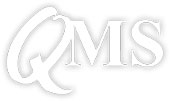



Extreme Weather Impacts 2018 Input Costs for Scottish Livestock Farmers
SCOTLAND, UK - Significant variation in levels of financial and technical performance within the Scottish livestock industry continues to be evident, according to a survey commissioned by Quality Meat Scotland (QMS).The results show the impact of the weather extremes of 2018 on financial performance, which led to those surveyed spending more on feed, bedding and veterinary care for their animals in 2018 compared with the year before.
Speaking yesterday (Monday, 18 November 2019) at the launch of QMS’s Cattle and Sheep Enterprise Profitability in Scotland publication, Stuart Ashworth, QMS Director of Economics Services, said input costs in general throughout 2018 were 6.3 percent higher than in 2017 with feed, fertiliser and energy costs all rising at a faster rate than the average.
The QMS publication, also known as the 'Enterprise Costings', covers the 2018 calf and lamb crop, and is based on a survey of beef and lamb producers. It omits CAP support payments, except for those which are directly linked to production, and strongly highlights the technical and financial performance variation that exists when comparing Scotland’s top third producers and the bottom third.
The results show deterioration in margins across all groupings and the lack of return from the marketplace for the labour and capital invested in their businesses by the farmers continuing to illustrate the scale of the challenge of achieving a positive margin without Common Agricultural Policy (CAP) support.
The survey, which provides a snapshot of the industry during 2018, compares for each sector the costs, revenues and margins achieved by the top-third of producers, the bottom-third and the sample average. Despite the challenges faced, the results continue to show the success of the top producers continues to be characterised by high physical and/or technical performance; strong control over costs and the ability to maximise returns from the marketplace.
Severe snowstorms in late February and March in 2018, particularly in eastern and southern Scotland, followed by an extended period of dry whether affected grass growth and livestock performance which in turn led to some significant cereal, hay and straw prices which impacted on feed prices in late 2018.
"Store cattle values at the autumn 2018 sales were softer than in 2017, typically 1.5 percent per head lower for younger cattle and 2.5 percent lower for older cattle," explained Mr Ashworth. "Prices remained lower than year earlier levels through into 2019.
"Although store lamb prices were lower at early sales, they firmed through September and October and over the season were slightly higher than in 2017. Prime cattle prices were firm for the first half of 2018 but then slipped below year earlier levels from September through into 2019.
"Consequently, most finishers in this survey were selling into a falling market. Early sales of prime lambs from the 2018 lamb crop sold into a particularly firm market but, by peak sales period of late autumn into 2019, prices were similar to year earlier levels."
Mr Ashworth added: "Thirty-six percent of suckler herds in the survey achieved a positive net margin, this is a decrease from the 44 percent last year. Margins among store finishers also reduced on the year with 38 percent of the businesses surveyed achieving a positive net margin, down from 43 percent of businesses last year.
"The proportion of hill ewe flocks making a positive net margin declined from 14 percent last year to 8 percent this year. Meanwhile, net profitability among upland flocks stood at 55 percent of enterprises surveyed achieving a positive net margin for their 2018 lamb crop, down from 56 percent last year and 68 percent from the 2016 lamb crop year."
Lowground flocks saw the most significant decline in margin with only 38 percent of surveyed flocks achieving this objective compared to 80 percent achieving a positive net margin for the 2017 lamb crop. Store lamb finishers similarly saw a deterioration in net margins with 69 percent of those surveyed achieving a positive net margin compared with all those surveyed in 2017.
"Businesses reporting positive net margins still struggled to deliver a fair return for labour and capital," said Mr Ashworth. "Most of the variation in financial and technical performance is associated with the level of physical performance characterised by the number of live animals reared to point of sale influencing the weight of animal sold per cow or ewe in the herd."
Also affecting the variation in margins was the level of mortality among breeding stock and the level of replacements needed to maintain herd or flock size. Improved margins were associated with low breeding stock mortality and generally lower herd replacement rates. Having cull stock to sell to set against the cost of replacement stock affects the cost of herd maintenance.
"There remains a clear correlation between the best financial returns, the best technical efficiency and the lowest greenhouse gas emissions per unit of output," concluded Mr Ashworth. "In the same way that this report summarises the opportunity that exists for the industry to improve financial margins, it also shows the scope to reduce emissions at the same time."
The Enterprise Costings publication can be collected free of charge from the QMS stand at AgriScot this week or viewed and downloaded from the publications section of the QMS website. A printed copy can be requested by emailing [email protected].



